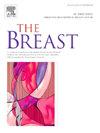Computational pathology for breast cancer: Where do we stand for prognostic applications?
IF 5.7
2区 医学
Q1 OBSTETRICS & GYNECOLOGY
引用次数: 0
Abstract
The very early days of artificial intelligence (AI) in healthcare are behind us. AI is now spreading in the healthcare sector and is gradually being implemented in routine clinical practice. Driven by the increasing digitization of microscope slides, computational pathology (CPath) is further strengthening the role of AI in the field of oncology. CPath is transforming fundamental research as well as routine clinical practice, both for diagnostic and prognostic applications. In breast cancer, CPath holds the potential to address several unmet clinical needs, particularly in the areas of biomarkers and prognostic tools. Indeed, multiple applications are on their way, ranging from predicting clinically meaningful endpoints to offering alternatives to gene-expression testing and detecting molecular alterations directly from digitized whole slide images. However, to fully harness the potential of CPath, several challenges must be overcome. These include improving the availability of multimodal patient data, advancing the digitalization of pathology laboratories, increasing adoption within the medical community, and navigating regulatory hurdles. This review offers an overview of the current landscape of CPath in breast cancer, highlighting the progress made and the hurdles that remain for its widespread clinical adoption in prognostic applications.
乳腺癌的计算病理学:我们在预后应用方面的立场是什么?
人工智能(AI)在医疗保健领域的早期阶段已经过去。人工智能目前正在医疗保健领域蔓延,并逐步在常规临床实践中实施。在显微镜载玻片日益数字化的推动下,计算病理学(CPath)正在进一步加强人工智能在肿瘤领域的作用。CPath正在改变基础研究和常规临床实践,用于诊断和预后应用。在乳腺癌方面,CPath具有解决一些未满足的临床需求的潜力,特别是在生物标志物和预后工具领域。事实上,多种应用正在进行中,从预测临床有意义的终点到提供基因表达测试的替代方案,以及直接从数字化的整张幻灯片图像中检测分子变化。然而,要充分利用CPath的潜力,必须克服几个挑战。这些挑战包括改善多模式患者数据的可用性,推进病理实验室的数字化,增加医疗界的采用,以及克服监管障碍。本综述概述了CPath在乳腺癌中的应用现状,强调了其在预后应用中广泛应用的进展和障碍。
本文章由计算机程序翻译,如有差异,请以英文原文为准。
求助全文
约1分钟内获得全文
求助全文
来源期刊

Breast
医学-妇产科学
CiteScore
8.70
自引率
2.60%
发文量
165
审稿时长
59 days
期刊介绍:
The Breast is an international, multidisciplinary journal for researchers and clinicians, which focuses on translational and clinical research for the advancement of breast cancer prevention, diagnosis and treatment of all stages.
 求助内容:
求助内容: 应助结果提醒方式:
应助结果提醒方式:


